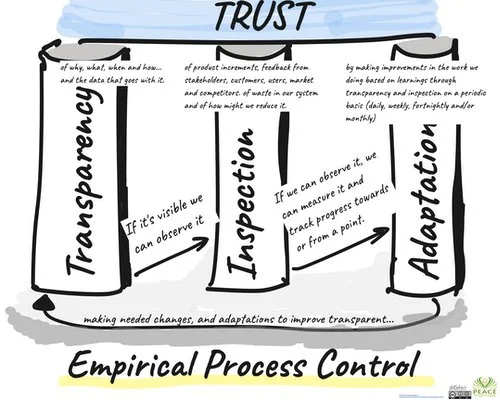Rethinking Agile: The Quiet Revolution and What It Means for the Future
The 17th State of Agile Report just landed! and I can't help but feel we're witnessing something remarkable. Not a dramatic upheaval, but rather a quiet revolution - one that's reshaping how we think about agility from the ground up.
The Signs of Change
The numbers tell an interesting story. SAFe usage has plummeted to 26% - a more than 50% decrease from last year. Meanwhile, 22% of organisations are openly rejecting mandated frameworks #yay, and another 12% are building their own approaches #yay #yay and #yay! This isn't chaos; it's evolution.
What's particularly fascinating is the divide between small and large organisations. Small companies report a 70% satisfaction rate with their agile approaches, while larger enterprises hover at 56%. Beyond these numbers lies an intriguing pattern: smaller companies tend to rely more on internal expertise and boutique partnerships, while enterprises often gravitate toward large-scale consultancies.
According to a 2023 McKinsey report, large enterprises spend an average of $500,000 to $5 million+ on agile transformations, primarily with major consultancies. Yet the State of Agile data shows these same organisations struggle more with adoption and satisfaction. Meanwhile, smaller companies, typically working with smaller budgets report better outcomes and higher adaptability.
This suggests something profound about transformation approaches. When small companies adapt agile practices, they tend to do so organically, often relying on internal champions and focused external support. They're more likely to start small, experiment, and evolve practices that fit their context. Large enterprises, perhaps driven by scale and standardisation needs, often opt for big-bang transformations led by major consultancies - yet the data suggests this might be exactly what's holding them back.
They're showing us that maybe, just maybe, we've been thinking about this all wrong. The path to agility might not lie in large-scale transformations and household-name consultancies, but in thoughtful, context-aware evolution guided by those who truly understand the organisation's DNA.
The Revolution's Blueprint
Look closer at the data and you'll see patterns emerging:
91% of teams are now fully distributed - the highest ever recorded
Engineering and R&D adoption is up 16% from last year
29% are actively exploring AI integration
But here's what's really interesting: the most successful organisations aren't following a prescribed path. They're prioritising outcomes over orthodoxy, adaptation over adherence, and context over copying.
What's Really Working
The report reveals something powerful: organisations finding success are focusing on:
Customer satisfaction (43%)
Time to delivery (39%)
Competitive advantage (34%)
Notice something? These aren't framework metrics. They're business outcomes. The revolution isn't about rejecting agile principles - it's about rediscovering them.
The Way Forward
This quiet revolution suggests a future where:
Teams adapt practices to their context rather than vice versa
Leadership focuses on enabling rather than enforcing
Success is measured by outcomes, not framework compliance
Innovation (like AI) is integrated thoughtfully, not reactively
Small, focused improvements trump large-scale transformations
The Challenge Ahead
Of course, challenges remain. The report shows:
47% still cite organisational resistance to change
41% point to insufficient leadership participation
37% say business teams don't understand Agile's potential
But perhaps these aren't just challenges - they're opportunities. Opportunities to rethink how we approach change, how we engage leadership, and how we communicate value.
What This Means for You
Whether you're in a small company or a large enterprise, the message is clear: the future of agile isn't about following a preset path. It's about finding your own way, guided by principles rather than prescriptions.
The quiet revolution isn't about dramatic overhauls. It's about thoughtful evolution, about questioning what works and what doesn't, and about having the courage to choose context over conformity.
Looking Ahead
As we process these findings, one thing becomes clear: we're not seeing the death of Agile, but rather its rebirth outside of the circus tents! This quiet revolution is stripping away the ceremonial to reveal the essential. And that's exactly what we needed.
What's your take? Are you seeing signs of this quiet revolution in your organisation? How are you navigating this evolution? I'd love to hear your thoughts and experiences in the comments below.
P.S. These reflections are based on the 17th State of Agile Report and my observations in the field. Your mileage may vary, and that's exactly the point - context matters.










